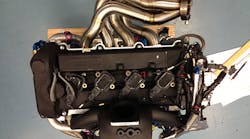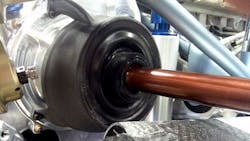To improve the DeltaWing racecar’s power efficiency during acceleration and turns, Ben Bowlby and his team of engineers felt the best solution was to decrease the car’s weight. Thus, they decided to replace internal components with lightweight, high-performance 3D-printed parts. Not only did it lower the weight, but it improved the vehicle’s structure and internal efficiency, as well as simplified the design process. The lightweight racecar was successfully test-driven at the 24-hour Lemans race and in the U.S. Petit Le Mans.
Windform 3D printing materials are made from a range of polyamide powders suited for selective laser sintering (SLS) in additive manufacturing. The DeltaWing car used Windform XT 2.0, a polyamide-based composit reinforced with carbon fiber that complies with ASTM E-595-07 standards. Heat resistant, durable, and lightweight, it’s suitable for aerospace as well as motorsport applications.
To significantly decrease mass, Zack Eakin, a DeltaWing engineer, proposed that the team replace the racecar’s gearbox siding with Windform XT 2.0. He designed a non-stressed member engine and gearbox that would reduce vibrations on the lightweight components. In the end, the gearbox with integral bell housing weighed only 33 kg.
The new availability of this robust 3D-printing material also allowed the team to make other key changes to benefit the car. Windform XT 2.0’s resistance to high temperatures and pressures allowed the DeltaWing team to redesign oil flow and gearbox structure to reduce parasitic losses. The team easily fabricated an otherwise complicated 3D-printed piece with integral oil drillings, a task that would typically require a 5-axis manufacturing process.
In addition to the new gearbox design’s transmission seal covers with pressurized oil-feed passages, the team used Windform XT 2.0 to additively manufacture electronics enclosures, electrical breakout boxes, and a tow hook plinth. In the prototyping and tooling phase, Windform XT 2.0 was applied in brake inlets and ducting, air inlet ducting, and filter enclosures.

